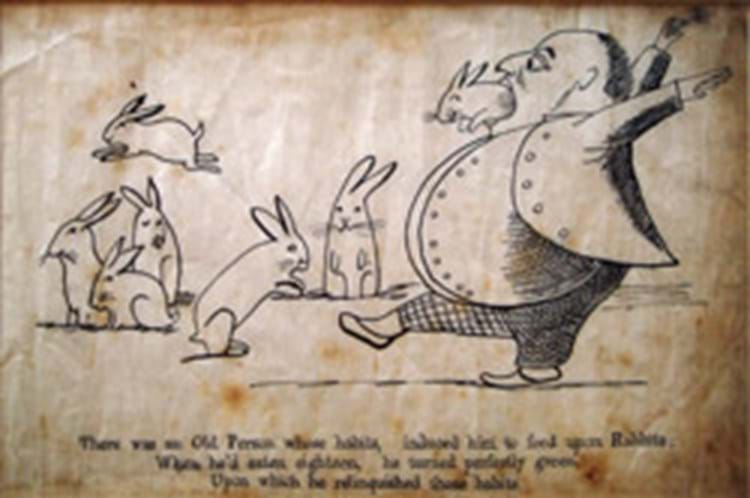
However, just as in later years Ernest Shepard would go on making copies of his beloved Winnie the Pooh illustrations for family and friends, so Lear too would run up examples of his famous illustrated limericks when staying with friends.
This may be the origin of a group of such drawings seen at Strides of Chichester on October 6, but these were executed on silk, a process he usually reserved for presentation sets.
This group first came to light in 2001, when the Strides vendor, a local lady, bought a lot comprising 16 ink drawings for just £260 in another south coast saleroom.
However, in the following year, half a dozen of them made an even more public and much more expensive London appearance in one of Chris Beetles' annual 'Illustrators' catalogues and exhibitions.
By this time they had been authenticated by Lear expert and biographer Vivien Noakes, whose brief introduction to the drawings in the Beetles catalogue offered a note on the background to a children's classic that has never been out of print.
Lear had entertained his friends with rhymes and drawings from boyhood, but it was while he was at Knowsley in the 1830s, commissioned to draw birds and animals in the Earl of Derby's menagerie, that he was introduced to what was then a very new verse form.
Lear himself never knew the word limerick, says Noakes, but "...at once began to make 'Old People' as he called them... for the children in the nursery there, and A Book of Nonsense was born. Lear was writing for children constrained by the demands of perfection; for them he created single but powerfully drawn images of exuberant, sometimes disasterous, excess and spontaneity."
Some of the limericks in this group only appear for the first time in the new and enlarged edition of A Book of Nonsense that Lear published in 1861, the edition which really popularised the limerick, and this led Noakes to suggest that this Chichester set may date from the early 1860s.
In the Chris Beetles exhibition they were priced at £8500 apiece, but only two would seem to have sold and the others went back to their owner.
Earlier this year, however, she decided to sell at auction and brought the remaining 14 drawings into Strides. Measuring 51/2 x 9in (14 x 23cm) and window mounted, the drawings show quite a bit of staining, which I imagine would be difficult to remove from silk, and this time a more modest reserve of £1500 apiece was agreed.
On the day 11 of the 14 sold to two well-known dealers, at prices from £1500 to £2000 (plus 15 per cent buyer's premium).
In 1986, two albums containing 79 original drawings and accompanying verses by Lear sold for £130,000 at Sotheby's, but they were thought to date from the 1840s and the first appearance of A Book of Nonsense. As such, they are the earliest known series of Lear's illustrated limericks.
By Ian McKay




